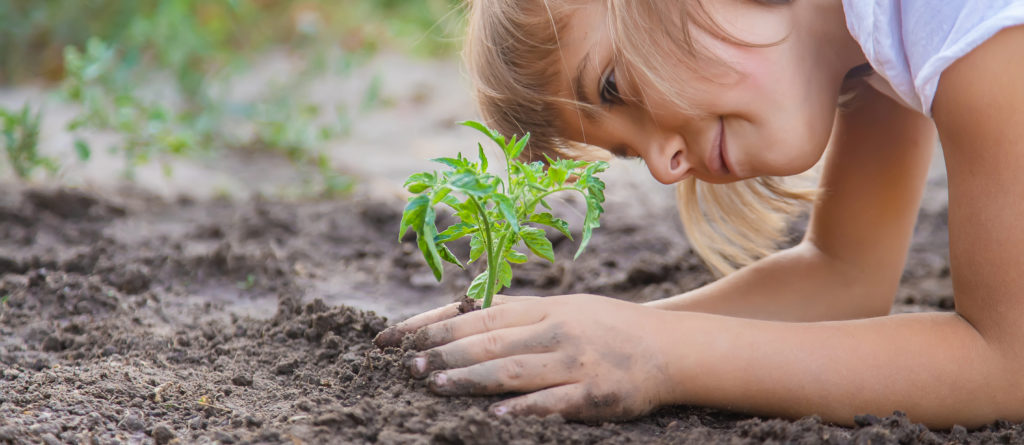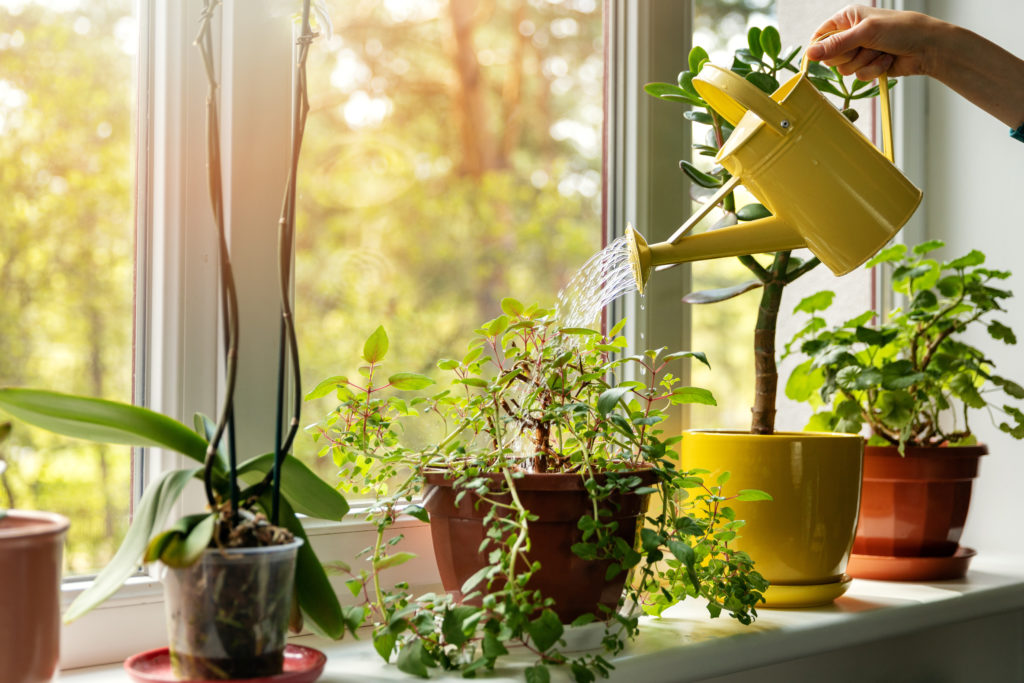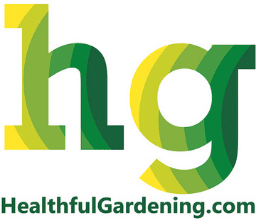
If you have never started a garden before, it can be intimidating to start. But, where you now see nothing but grass or weeds, there can soon be a thriving garden full of fresh vegetables.
Some of the most important things to think about in Gardening 101 are the soil, the sun, and the temperatures in your area. All three of these will factor into where you choose to put your garden and which plants you choose for it.
Gardens come in many sizes and generally contain a wide variety of plants. You could grow a flower garden, a vegetable garden, or a garden that makes use of larger hedges, shrubs, and other foliage.
Flower gardens can liven up a property and improve its value as well as its looks. Vegetable gardens can help you grow food for the family table. A garden also could improve privacy and security.
As long as you have the desire to add real life to your home and outdoor spaces, gardening is a great tool for beautifying your surroundings, adding lovely natural aromas, and grow food for the table. You just need an idea of what you want from your garden and then make a plan to do it.
Why Gardening in the First Place?
If you are considering becoming a gardener, it’s important to have the right mindset. No garden can produce instant results. It takes time and patience to grow plants, and many people find that they like to watch how their garden progresses day by day. Taking some time each day out in the garden can be a calming experience, as you absorb the calm and beauty of nature. It can even be a good stress reliever to engage in after work.
Gardening 101 for Beginners
Some good gardening basics that can help just about anyone develop a green thumb can help to make your initial efforts more successful.
You need to plan your garden space and have an idea of the plants that you want to grow within that space. While a traditional garden puts the plants in the ground, a container garden enables you to grow plants just about anywhere.
You can determine the types of plants that you want to grow and the size containers needed to ensure the best possible growth.
Getting started is the easy part. You can buy seeds or seedlings to start your garden. Some hand tools for digging and planting will help you to put your garden into the ground. Add some fertilizer and water your seeds or seedlings regularly, and you could have a full garden in bloom soon.
What Plants Need
Plants mostly need sunlight, soil, water, and protection from frost on cold nights to enable them to survive. If you do not have direct sunlight due to shade from a nearby structure or similarly large object that reduces your sun exposure, you might try using grow lights.
Affordable grow lights could enable you to grow plants year-round with indoor container gardening during colder months. If an outdoor garden is not an option, you could continue growing a container garden indoors.
The soil needs nutrients that replenish to provide food for the plants you choose to grow. The plants also need water in varying amounts to enable them to grow and develop. Some plants even need the birds and the bees to pollinate them so that they can produce fruit for your table. You can do all of that indoors with a
Gardening soil and plant fertilizer will help you to get your plants growing strong and healthy while ensuring they have ample nutrients to grow their best. And you need to water your plants regularly.
Some plants need more water than others, and you can water them directly with a traditional water pitcher. Drip irrigation and water sacks placed around the base of some plants, shrubs, or small trees also can provide them with ample water but without overdoing it.

Where Do You Want to Plant a Garden?
You might have an idea for the best place, but it’s a good idea to observe it for a few days to see what kind of sunlight it gets. There are many plants that crave full sunlight, that is, sunlight for at least eight hours a day. Others need partial shade with the full sun only during part of the day.
Others are shade lovers that won’t do well in full sunlight. Make sure you find an area that gets the amount of sun that your plants will need. If you have an idea about what you might want to plant, take a look at how much sun they need before choosing your gardening spot.
What Things Should You Look for in Your Garden?
The soil is another big concern for your gardening spot. The soil should drain very well, and it shouldn’t be in an area that sits in standing water after rain. As you observe different areas to see which would be best for vegetable gardening, notice whether an area might collect water due to being on a downslope or in a depression.
If the garden soil is poor and doesn’t have much organic material in it, you can always supplement the soil by mixing in potting mix or compost to make it richer. The garden bed should be fairly even, and it shouldn’t be too rocky. Having a few rocks mixed into the soil is fine, and it can even help with drainage. But if you have large rocks, remove them before you start vegetable gardening.
General Benefits of Gardening
Gardening is a very therapeutic hobby that enables you to nurture and grow a wide variety of plants. It helps you to focus on what can be a very fun and rewarding hobby. You learn more about your local environment, what creates plants and how the birds and the bees help with pollination.
If you have indoor plants and want to produce fruit or vegetables from the blossoms, you can manually pollinate with a cotton swab and maybe a magnifying glass to help distinguish male and female flowering plants.
When you have a garden growing well and in full blossom, you can enjoy the daily pleasure of viewing and smelling your plants as they grow. When the vegetables and fruit-bearing plants produce food, you can enjoy the freshest and best-tasting salads and other favorites as often as you like. If you make a compost pile, you can produce your own fertilizer while also reducing the amount of waste that goes to the landfill.
How much time do you want to spend in your garden?
In order to enjoy your garden, you need to be realistic about how much time you have to spend maintaining it. An outdoor garden needs close attention to pull weeds, keep pests away and protect it against frost. An indoor container garden is easy to maintain but can take more time to set up and get growing its best.
Ultimately, the ideal garden is one that you have plenty of time to maintain and will produce the initial plants that you most want in or around your home. If you grow your own lettuce and a national recall is issued for bagged lettuce causing salmonella poisoning, that is not your concern. You do not ingest the pesticides used on industrial-level farming operations, and you always have the freshest vegetables around.

What Tools Should You Use to Start Your garden?
Having a good, strong shovel is important for many garden tasks. There are also several other gardening basics that you should have before you start gardening.
Have a hoe at the ready for many different tasks. These can be especially good for clearing away new weeds that may crop up. You will also need a hand trowel for transplanting seedlings, making small holes, planting bulbs, and more. You may also want to stock up on mulch. You will need that for after the garden plants are in the ground so that it’s harder for weeds to pop up.
If you will be engaging in organic gardening, you will also need some insecticide that is natural and non-toxic. There are many of these on the market, including diatomaceous earth. There are also cups of ladybugs that you can buy in nurseries that will kill bugs that attack gardens.
Having a seat or mat to sit on as you plant and work the soil can also be helpful.
Gardening gloves are also useful for keeping your hands clean and allowing you to pull up rocks and weeds more easily. A garden fork can help you dig into dense soil and make it easier to turn and mix the soil.
You may also want a spray bottle or mister if you are going to water seeds and seedlings. If you plan to buy plants that are already mature, you won’t need this tool. If you are doing indoor gardening, there are smaller tools available such as a mini hand trowel and garden fork.
What Kind of Garden do You Want to Grow?
You may want to grow decorative plants instead of vegetables, you may want a garden that is nothing but vegetables, or you may want a combination of the two.
Decorative plants are not edible, but they can look great in your yard and be fun to grow. Edible gardening can take a little more care, as you don’t want to have vegetables that are doused in herbicides and pesticides.
Many people turn to organic gardening as a way to have fresh, organic vegetables without the high price tag at the supermarket. If you don’t want to engage in organic gardening, that’s ok too. Just make sure that you know what you’re using for insecticides and herbicides.
Growing purely decorative plants is also a great pastime, and you can transplant them into other areas of your yard or into your home once they get larger.
Which vegetables are easiest to grow?
You could grow a regular bounty for your dinner table with a wide range of lettuce, spinach, and other greens.
Several kinds of tomatoes, onions, celery, and just about anything else you might enjoy growing and eating could be produced in your garden.
Lettuce is an especially easy and fast-growing vegetable. So are cherry tomatoes, cucumbers, and squash. Large tomatoes generally are more demanding of your attention as well as watering, but the final product is well worth the effort.
An outdoor garden might require some mulch to help keep weeds away, and an indoor garden could benefit from some decorative moss or similar filler to help keep the soil moist and pests away.
Protect Your Plants
Now that you’ve successfully planted your vegetables and your garden looks promising, the nurturing process is just beginning.
Those young starter plants have been pampered and meticulously cared for before you purchased them. Now it is your responsibility to continue this nurturing and protect your new tender plants until they reach maturity.
Common garden threats include pesky rodents searching for food along with weather challenges like frost, cold air, and even extreme heat.
Animals are naturally attracted to the micronutrients in new plants. Newly sprouted plants also cannot withstand as much grazing damage as established plants. In order to combat these unwelcome intrusions by random rodents, consider a fence or trunk wraps for plants once your garden is planted.
Depending on the season, a frost cover is highly recommended and metallic streamers or bird tape can keep hungry birds away. If you have the space, a tried and true method of protection is an old-fashioned scarecrow. It will certainly fend off most winged predators.
Use caution with retail repellants. Although they may be effective, the last thing you want to do is taint your future crops by introducing chemicals to tender plants.
For best practices, consult growing instructions for your specific plants and vegetables to protect your investment of time and money and keep your new garden as safe as possible.
The Absolute Minimum Amount You Need to Know
If you read nothing else from this guide, read the following 14 steps and give gardening a try. You
may find that you don’t like it, or you may find that you like it enough to want to read more of the
guide. Good luck!
1) Think about the vegetables and herbs you enjoy eating and the flowers you enjoy looking at.
Make a list of those you enjoy most, and think about which are hardest to find or most expensive to
buy in stores – those are the ones you’ll want to grow. Sweet corn, winter squash, and watermelons
are popular choices, but be aware that they take up a lot of space (winter squash, for example,
should be planted at least 180 cm/6 ft apart). Other vegetables take more space than you might
think – tomatoes, for example, should be planted at least 60 cm (24 in) apart. Some plants that get
big (cucumbers and pole beans, for example) can be trained up structures called trellises so they
take less space.
2) Divide the crops you want to grow into cool-season crops (which do best in the spring and the fall)
and warm-season crops (which do best in the summer). Common cool-season crops include beets,
broccoli, cabbage, carrots, cauliflower, collard greens, kale, lettuce, and other salad greens, peas,
potatoes, radishes, spinach, and turnips. These crops can survive cold weather (even some frost).
Popular warm-season crops include beans, corn, cucumbers, eggplant, okra, peppers, pumpkins,
squash, tomatoes, and watermelons. These crops need very warm weather to grow and cannot survive frost at all.
3) Further divide the crops you want to grow into crops that can be grown from seed in the garden
and those that are usually planted in a house or greenhouse and moved (or transplanted) into the
garden as small plants. Of the crops listed above in step 2, broccoli, cabbage, cauliflower, collard
greens, eggplant, kale, peppers, and tomatoes are almost always transplanted by new gardeners.
Cucumbers, pumpkins, and watermelons are sometimes transplanted and sometimes not (buying or
growing your own plants can protect the young plants from pests and cold weather that they would
meet in the garden). Other plants are grown from seed.
4) Using your lists from steps 2 and 3, above, figure out which plants you need to buy as seed and
which you will buy as transplants. In late winter, go to a garden store or use a mail or internet catalog to buy the seeds you need. You will buy the transplants when you need them later. If you are a
new gardener, it is recommended that you plan to buy transplants at a nursery or garden store
rather than growing them yourself.
5) In April, or as early after that as you can, find a garden spot (or take whichever one you’ve been
given). If you have a choice, your garden location should be flat and exposed to full sun all day.
6) Use whatever tool(s) you have handy to break up the soil throughout your garden. If at all possible, add some fertilizer and soil amendments. Talk to an experienced person at a good garden store
for suggestions about what to buy, emphasizing that you want to grow organically.
7) Mark off the areas you plan to grow in with sticks. Leave paths in between that are at least 30 cm
(12 in) wide.
8) Use your tool(s) to prepare smooth beds where the topmost soil is very fine (no large lumps).
9) Using the directions on the seed packets you bought, start planting seeds of cool-season crops
(again, this can happen as early as the beginning of April for many crops). Leave space for the
warm season crops, which will not get planted until late May or early June (or plant very quick-growing crops that will be finished by early June).
10) Weed your garden regularly (at least once a week), and put down leaves, straw, newspaper,
and/or cardboard around your crops to keep weeds from growing. Harvest crops as they mature.
11) When all danger of frost has passed (in late May or early June), buy transplants of warm-season
crops and plant them in the garden as quickly as you can after buying them.
12) Continue weeding and harvesting through the summer, watering your garden thoroughly (for one hour or more) once a week if it has not rained.
13) As cold weather approaches in October, begin replacing warm season crops with cool-season crops as the warm-season crops begin to die.
14) Harvest your garden for as long as you can.
